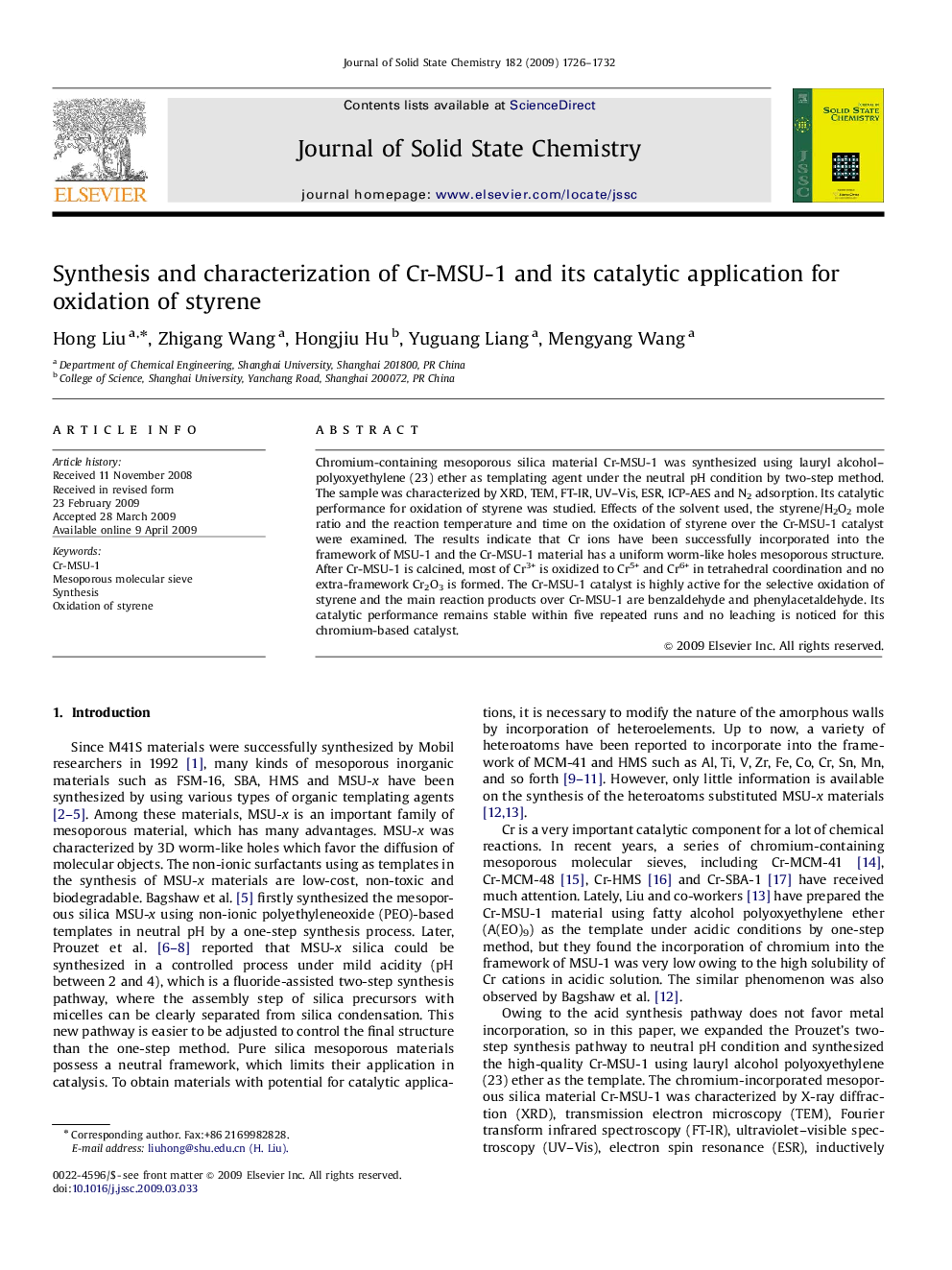| Article ID | Journal | Published Year | Pages | File Type |
|---|---|---|---|---|
| 1329239 | Journal of Solid State Chemistry | 2009 | 7 Pages |
Chromium-containing mesoporous silica material Cr-MSU-1 was synthesized using lauryl alcohol–polyoxyethylene (23) ether as templating agent under the neutral pH condition by two-step method. The sample was characterized by XRD, TEM, FT-IR, UV–Vis, ESR, ICP-AES and N2 adsorption. Its catalytic performance for oxidation of styrene was studied. Effects of the solvent used, the styrene/H2O2 mole ratio and the reaction temperature and time on the oxidation of styrene over the Cr-MSU-1 catalyst were examined. The results indicate that Cr ions have been successfully incorporated into the framework of MSU-1 and the Cr-MSU-1 material has a uniform worm-like holes mesoporous structure. After Cr-MSU-1 is calcined, most of Cr3+ is oxidized to Cr5+ and Cr6+ in tetrahedral coordination and no extra-framework Cr2O3 is formed. The Cr-MSU-1 catalyst is highly active for the selective oxidation of styrene and the main reaction products over Cr-MSU-1 are benzaldehyde and phenylacetaldehyde. Its catalytic performance remains stable within five repeated runs and no leaching is noticed for this chromium-based catalyst.
Graphical abstractMesoporous Cr-MSU-1 with worm-like holes was synthesized by a novel two-step method. The Cr-MSU-1 material is highly active and stable for the selective oxidation of styrene.Figure optionsDownload full-size imageDownload as PowerPoint slide
